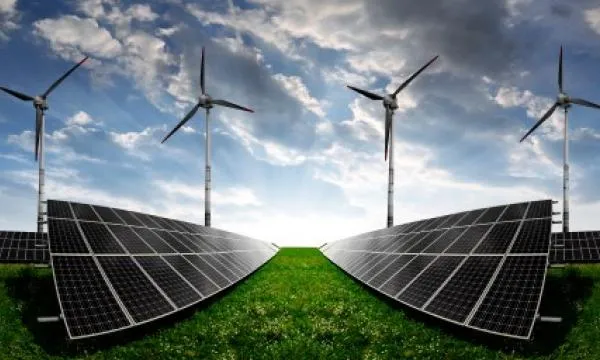
Will cheaper wind energy lead the charge to energy decarbonization?
A new study predicts wind energy costs are set to drop by 49% over the next 30 years.
Wind energy will get cheaper by as much as 49% by 2050 on the back of cost reductions seen in the last year, and technological advances in the future, according to a study published in Nature Energy.
Industry experts predicts that cost reductions may be by between 17% and 35% by 2035, and between 37% and 49% by 2050, driven by bigger and more efficient turbines, lower operating costs, smaller capital requirements, and technological advancements in the industry. The estimates cover three wind applications: onshore wind, fixed-bottom offshore wind, and floating offshore wind.
“Wind power deployment has expanded rapidly and wind energy is now among the lowest-cost means of electricity supply and energy-sector decarbonization in many regions. Underpinning these developments have been technology innovation and industry maturation, for example, turbine size, industrialization, risk mitigation, supplier competition, competitive incentives and other factors. Initially these cost reductions materialized in onshore wind, but industry maturation and cost declines have accelerated for offshore wind over the past five years,” the study wrote.
These cost reductions were driven by five factors: upfront capital cost, ongoing operating costs, capacity factor, project design life, and cost of financing. The study said that continued improvements across these dimensions is expected with the key driver in these improvements would be turbine size.
“In 2020, experts have become even more optimistic about further growth in turbine capacity ratings, hub heights and rotor diameters. In 2015, the median expert predicted that a typical onshore turbine installed in 2030 would have a rated capacity of 3.25 MW. In 2020, the forecast is for a 5.5 MW rating in 2035. For offshore wind, 2015 respondents predicted an 11 MW average for 2030, whereas the 2020 respondents indicate 17 MW by 2035,” the study said.
However, these predictions in reduction may still change drastically, depending on technological advancements, as wind energy costs had previously exceeded 2015 expectations with a significant drop in costs by as much as 50% lower than the consensus estimate at the time.
The study also said that the significant reduction of costs in the future will enable wind to play a larger role in the global energy supply whilst facilitating energy-sector decarbonisation.
“These trends and expectations might enable wind to play a larger role in global energy supply than previously thought while facilitating energy-sector decarbonization. As costs decline, additional focus may turn to the value of wind in energy markets and to deployment barriers such as human-use conflicts, wildlife impacts and transmission needs,” the study wrote
The study surveyed 140 wind experts globally concerning each of the three wind applications cited.








![Cross Domain [Manu + SBR + ABF + ABR + FMCG + HBR + ]](https://cmg-qa.s3.ap-southeast-1.amazonaws.com/s3fs-public/styles/exclusive_featured_article/public/2025-01/earth-3537401_1920_4.jpg.webp?itok=WaRpTJwE)
![Cross Domain [SBR + ABR]](https://cmg-qa.s3.ap-southeast-1.amazonaws.com/s3fs-public/styles/exclusive_featured_article/public/2025-01/pexels-jahoo-867092-2_1.jpg.webp?itok=o7MUL1oO)









 Advertise
Advertise


